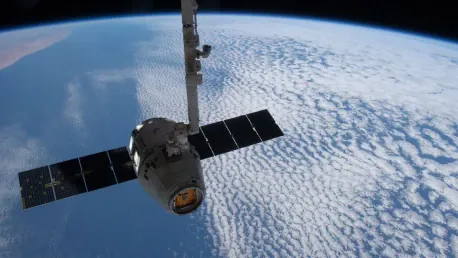Researchers from the Shanghai Astronomical Observatory of the Chinese Academy of Sciences have taken significant steps in refining Global Positioning System (GPS) accuracy by integrating data from Low Earth Orbit (LEO) satellites with regional ground stations. The study, published on August 12, 2024, in Satellite Navigation, addresses the challenges in maintaining precise Global Navigation Satellite System (GNSS) applications on a regional scale. By combining LEO satellite data with measurements from ground stations, the researchers aim to enhance GPS’s orbit and clock accuracy, which is crucial for high-precision applications.
Integrating LEO Satellite Data for Enhanced Precision
Methodology and Data Collection
The primary focus of the study was a detailed analysis of data collected between January 20 and 26, 2019. The data sources included 13 LEO satellites and six International GNSS Service (IGS) stations distributed across China. These satellites were part of various missions, including GRACE Follow-On, SWARM, Sentinel, Jason, and China’s meteorological satellites. Leveraging a mix of satellite and ground station data, the researchers aimed to understand how well this integration could enhance GNSS accuracy, especially in regions with sparse ground station coverage.
The study revealed that combining LEO satellite data with regional ground station data resulted in substantial improvements. Specifically, the integration achieved centimeter-level precision in GPS orbit and clock products, essential for applications that require high accuracy. An average GPS orbit error of 2.27 cm radially, 3.45 cm along-track, and 3.08 cm cross-track was observed by the researchers. Furthermore, clock accuracy improved significantly, with errors better than 0.15 nanoseconds and LEO satellite errors restricted to within 4 cm. These findings underscore the methodology’s effectiveness, presenting a potential game-changer for high-precision GNSS applications.
Impact on Regional GNSS Applications
The results of the study highlight a significant trend in enhancing GNSS accuracy, especially in regions with limited ground station coverage. The integration of LEO satellite data addresses one of the significant challenges GNSS networks face—maintaining precision in orbit determination in less densely monitored areas. This development provides a reliable solution for achieving high-precision GPS metrics, essential for various applications such as navigation, positioning, and Earth observation.
The successful integration of LEO data with regional ground stations could transform how GNSS services are delivered, offering a robust method for overcoming the current limitations of regional GNSS networks. This approach promises to improve GNSS reliability and precision, crucial for diverse uses ranging from everyday navigation systems to advanced scientific research in geolocation and climate monitoring. As LEO satellite constellations grow, the method validated by Dr. Chengpan Tang and his team could well set the standard for future innovations in the GNSS field.
Broader Implications of the Study
Potential for Global Standardization
The adoption of this innovative approach for GNSS accuracy enhancement is already generating interest within the scientific community. With increasing attention to high-precision applications, the integration of LEO satellite data offers a practical and scalable solution for achieving the required accuracy levels. Considering the growing number of LEO satellite constellations, this method could become a global standard, ensuring that more regions, regardless of their ground station density, attain high-precision GNSS services.
As the methodology gains wider acceptance, it could lead to significant advancements in navigation technologies and Earth observation systems. The potential impact of achieving higher precision in GNSS data is far-reaching, influencing sectors such as autonomous vehicles, maritime navigation, and even space exploration. By ensuring centimeter-level accuracy and improving clock precision, the integrated approach could provide the reliability needed for these advanced applications, making them more feasible and efficient.
Future Research and Development
Researchers from the Shanghai Astronomical Observatory, part of the Chinese Academy of Sciences, have made noteworthy progress in elevating the accuracy of the Global Positioning System (GPS). Their innovative approach amalgamates data from Low Earth Orbit (LEO) satellites with inputs from regional ground stations. This meticulous study, published in Satellite Navigation on August 12, 2024, delves into overcoming obstacles faced in maintaining precise Global Navigation Satellite System (GNSS) applications on a regional scale. By merging data from LEO satellites with measurements taken from ground stations, the researchers strive to improve GPS’s orbit and clock precision. Enhanced accuracy in these areas is essential for numerous high-precision applications, such as autonomous driving, aircraft navigation, and geospatial mapping. The team’s groundbreaking methodology opens the door to significant advancements in GPS technology, underscoring the importance of continuous innovation in satellite navigation. As the demand for pinpoint accuracy grows across different sectors, this research represents a vital step forward in meeting those needs.









